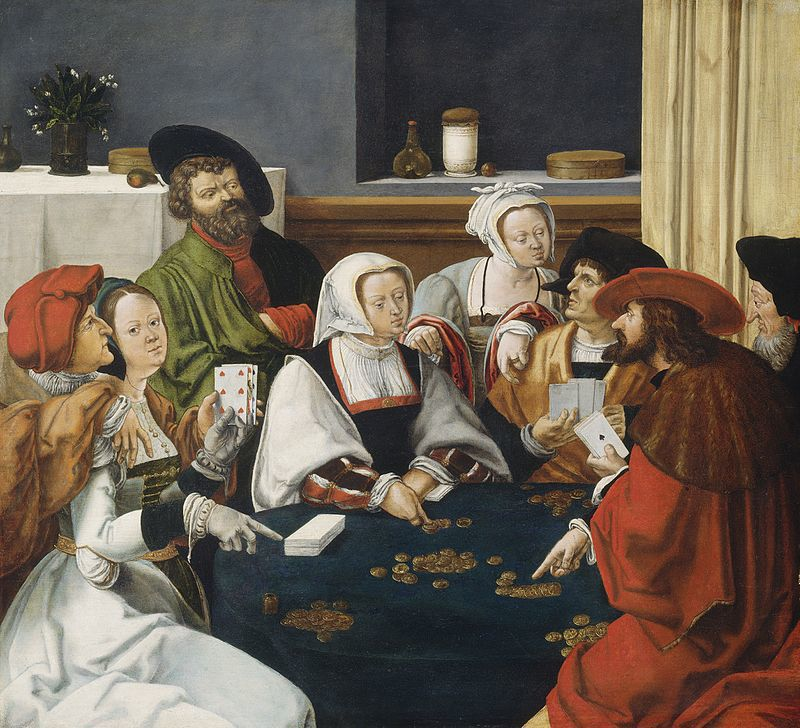
Playing cards arrived in Italy from Mamluk Egypt during the 1370s. Mamluk cards used suits of cups, coins, swords, and polo-sticks. As polo was an obscure sport, Italians changed them into batons. Italy was a collection of small states so each region developed its own variations. Southern Italy was under strong Spanish influence so their cards closely resemble the ones in Spain. Northern Italian suits used curved swords instead of straight ones and their clubs are ceremonial batons instead of cudgels. Swords and clubs also intersect unlike their Spanish counterparts.
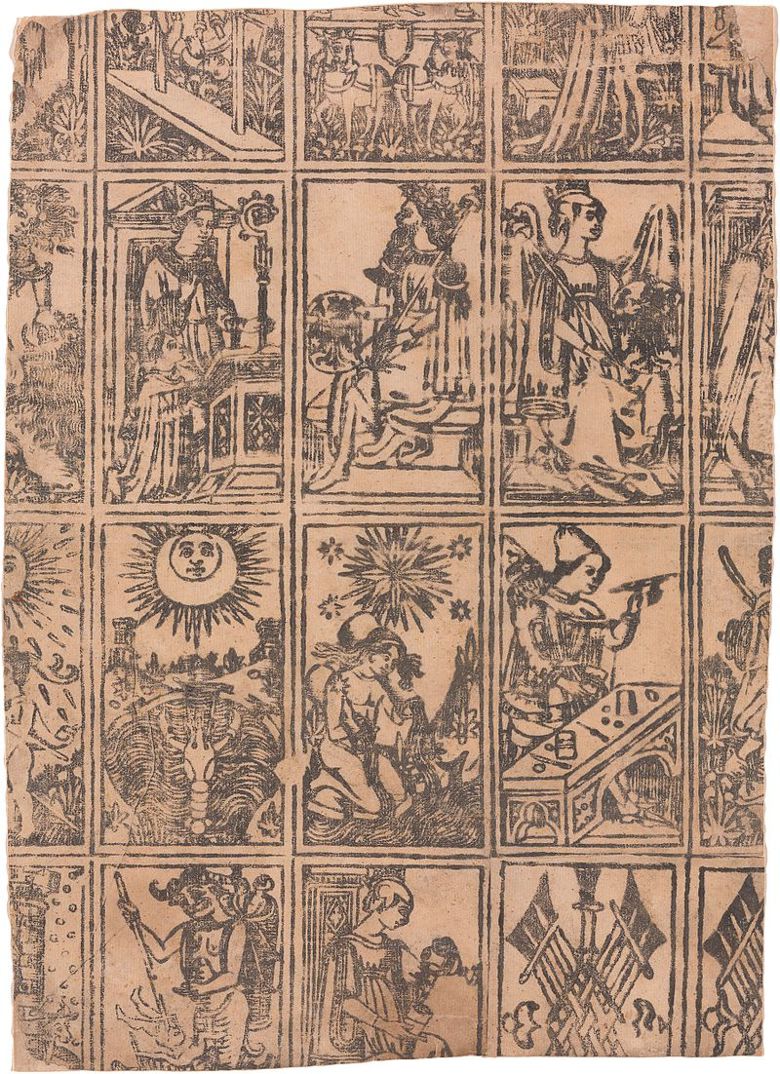
The first documented tarot decks were recorded between 1440 and 1450 in Milan, Ferrara, Florence and Bologna, when additional trump cards with allegorical illustrations were added to the common four-suit pack. These new decks were called carte da trionfi, triumph cards, and the additional cards known simply as trionfi, which became "trumps" in English.
The earliest documentation of trionfi is found in a written statement in the court records of Florence, in 1440, regarding the transfer of two decks to Sigismondo Pandolfo Malatesta.
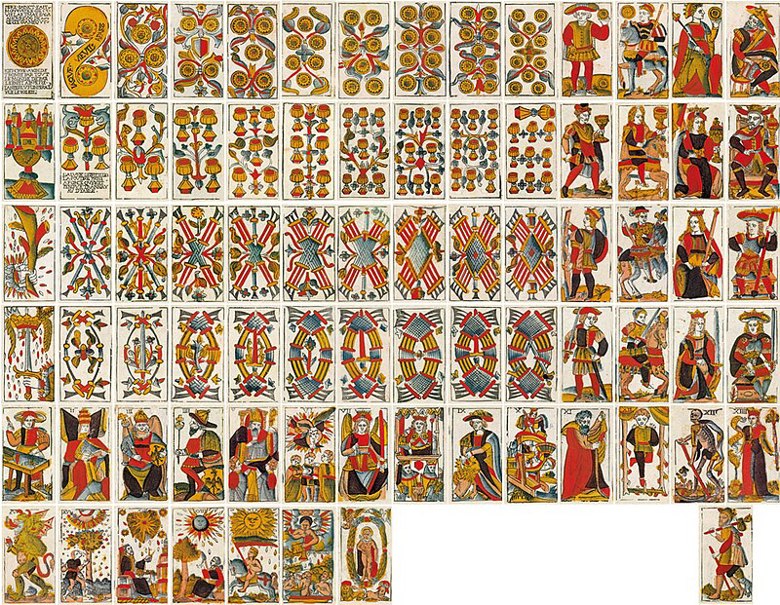
Viéville's tarot, circa 1650
Tarot decks were in production in Pinerolo by 1505. The best description of 16th century Piedmontese tarot is by Francesco Piscina who wrote a discourse about it in Mondovì in 1565.
Although his details about the game are sparse, his terminology strongly implies Bolognese and Florentine influence. Like in tarocchini, he treats the imperial and papal trumps as equals, a feature which still survives in Asti. Like in Bologna, the highest trump is the Angel which outranks the World
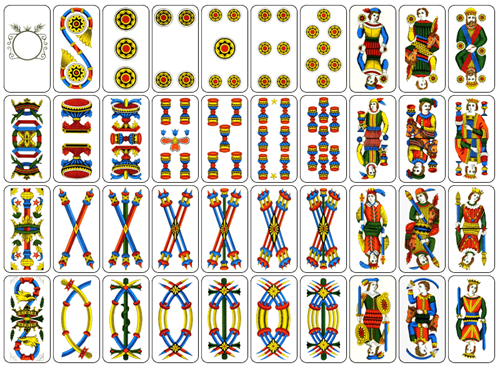
Cards from Bologna
The 40 card Primiera Bolognese set is used for standard games like Primero
the 62 card Tarocco Bolognese set is used to play Tarocchini

The regional styles of north-western Italy use the suits of Hearts (cuori), Diamonds (quadri, literally "squares"), Spades (picche, "pikes") and Clubs (fiori, literally "flowers").They differ from French or international standard decks in that they generally lack numbered side pips, and have characteristic court card designs for the King (re or regio), Queen (donna) and Knave (Gobbo or Fante).
Toscane and Fiorentine playing cards feature single-headed court cards featuring a full portrait, whereas the other three styles feature double-headed court cards.
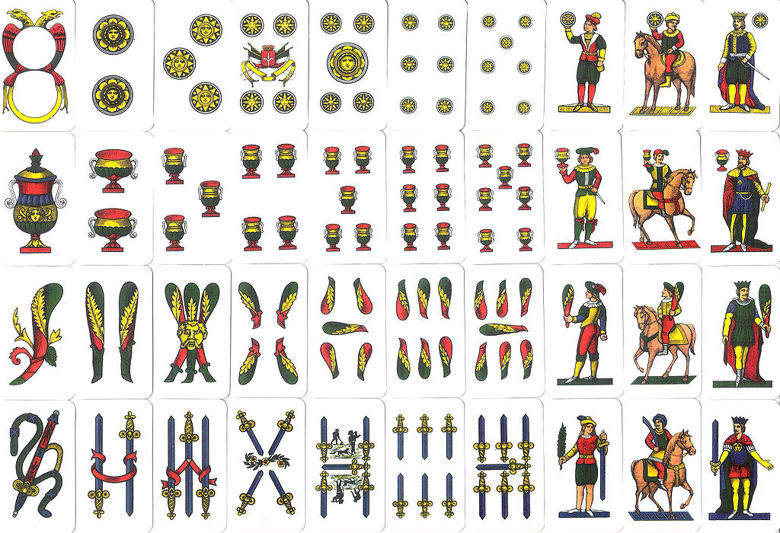
The Napoletane pattern
Widely used across southern and central Italy. It has a number of unique and characteristic cards, including the 3 of Clubs which features a grotesque mask with a large moustache, silhouettes of farming activities on the 5 of Swords, and the Horse/Cavalier (Cavallo) of Swords being portrayed as a Moor, wearing a turban and holding a scimitar.
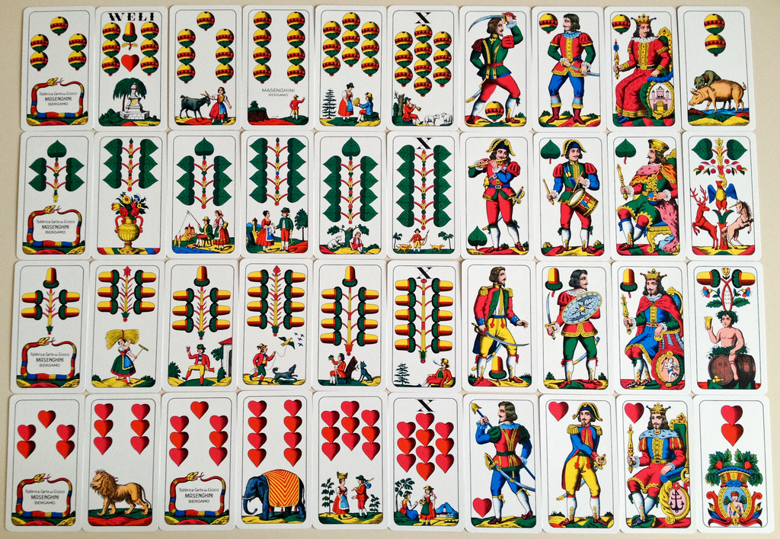
The Salzburg pattern
At the end of World War I, the German-speaking region of South Tyrol was transferred from Austria to Italy, but retained German cultural links, including the traditional German card suits, known in German as the Salzburger pattern, or in Italian as Salisburghesi after the city of Salzburg.
Trappola
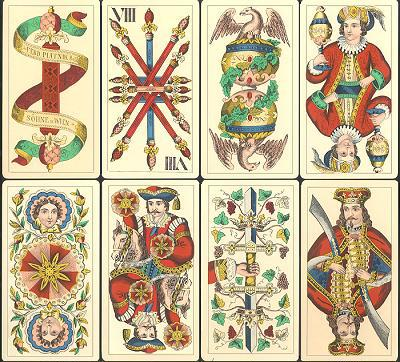
Trappola is an early 16th-century Venetian trick-taking card game which spread to most parts of Central Europe and survived, in various forms and under various names like Trapulka, Bulka and Hundertspiel until perhaps the middle of the 20th century.
The original Venetian version described by Girolamo Cardano was for only two players and played without trumps or bidding. It is also the earliest known trick-taking game where the ace has been promoted above the king and played with a stripped deck.
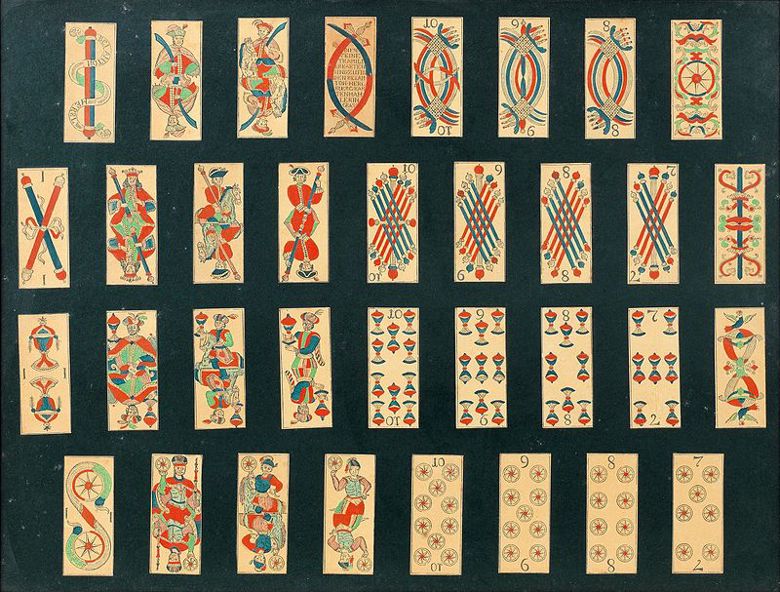
Trappola is likely to be the first card game encountered by Greeks as the Greek word for a deck of playing cards is "Τράπουλα", a transliteration of Trappola. It may have entered Greek from the Venetian-occupied Ionian Islands during the 16th century. In Corfu, Aspioti-ELKA produced Venetian pattern cards until 1940. Trappola card production ceased in 1944, the last packs being produced in Prague. In 1988, Piatnik restarted production of a 36-card pack using a design of Trappola cards made in the Austro-Hungarian Empire in 1875. A genuine Trappola game, perhaps the only known survivor of the Trappola group is the game Stovkahra, also known as Brčko, played by the Czechs of Romania in the village of Șumița, situated in the Banat region of Romania.

Trappola in a 17th-century painting by Almanach
The book on games of chance (Liber de ludo aleae)
by Cardano, Girolamo, 1501-1576
Comments
Post a Comment